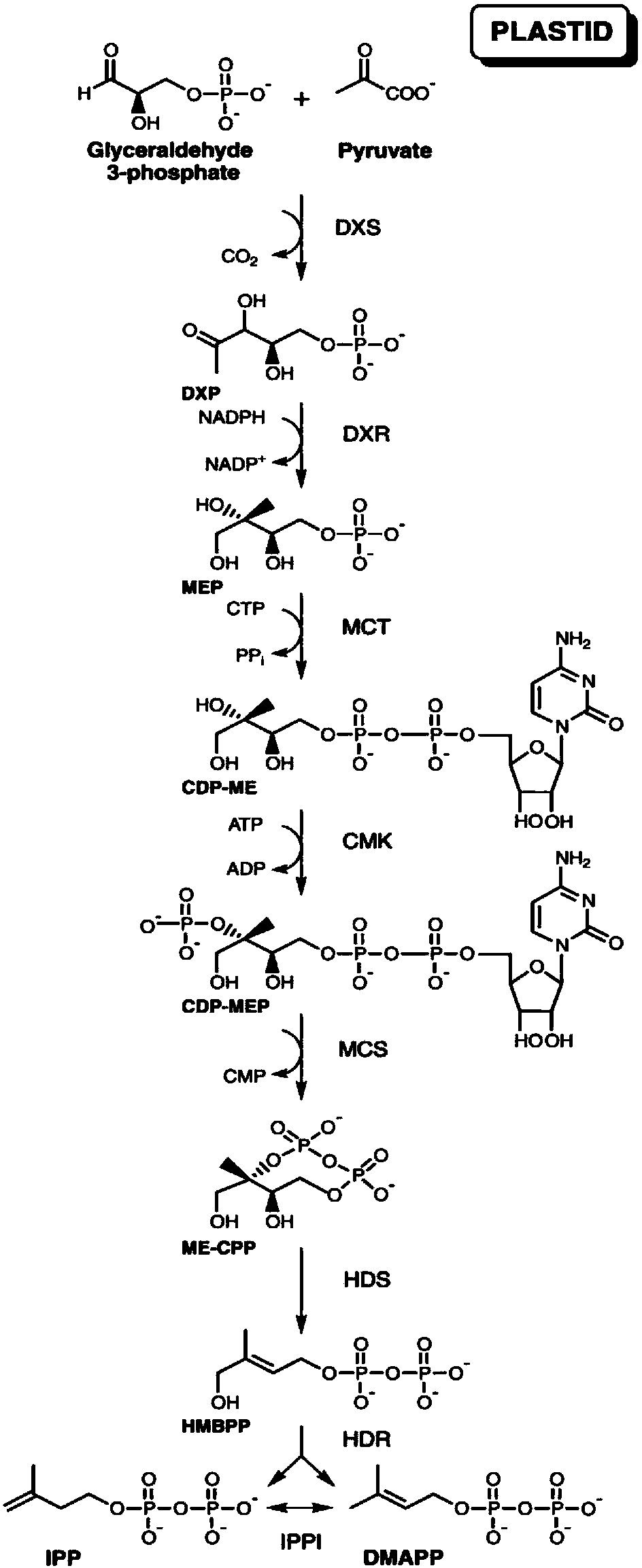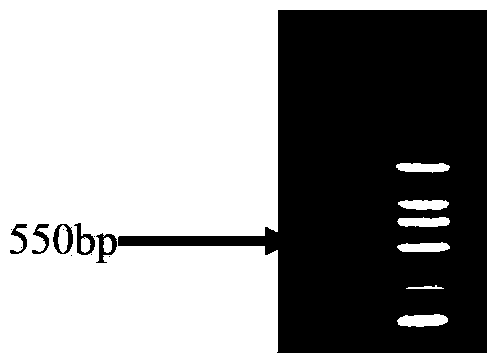Target for preventing and killing weed-crofton weed and application of target
A technology for the prevention and control of Erythrina japonica, which is applied in the fields of application, herbicides and algicides, special data processing applications, etc., and can solve the problems of inability to carry out normal physiological activities, inability to synthesize, and plant death.
- Summary
- Abstract
- Description
- Claims
- Application Information
AI Technical Summary
Problems solved by technology
Method used
Image
Examples
Embodiment 1
[0024] Embodiment 1, the cloning of Eupatorium adenophorum EaispF1 gene
[0025] The seeds of Eupatorium adenophorum were collected from Yunnan Province. Mix the flower soil: vermiculite in a ratio of 2:1, put it into a pot with a diameter of 25cm, sprinkle the seeds of Eupatorium adenophorum on the moistened cultivation soil, and spread a layer of 2mm thick on the seeds. On the soil surface, cover the flower pot with paper to prevent excessive evaporation of water. After 5-7 days, after the Eupatorium adenophorum seedlings grow out, remove the paper on the flower pot and cultivate them in the greenhouse for 8 weeks. Extract total RNA from seedlings, such as figure 2 shown.
[0026] The cDNA sequence of the EaispF1 gene of Eupatorium adenophorum was screened out by in situ hybridization technology, and a positive clone was obtained after identification by enzyme digestion, which was identified as a partial sequence of the IspF gene. In order to obtain the full-length Eaisp...
Embodiment 2
[0033] Example 2 Obtaining of EaispF1 Gene Overexpression Arabidopsis Strains
[0034] The EaispF1 gene cDNA cloned in Example 1 was constructed into the plant expression vector pCAMBIA1300 with a CaMV35S promoter. Through the Agrobacterium-mediated pollen tube transformation method, the EaispF1 gene was transferred into Arabidopsis plant cells, and four transgene overexpressed Arabidopsis lines were screened, and the PCR identification results were as follows Figure 5 shown.
Embodiment 3
[0035] Example 3 EaispF1 subcellular localization
[0036]The signal peptide of EaispF1 indicates that the position of its protein expression is chloroplast. The subcellular localization of EaispF1 in transgenic Arabidopsis was determined by the expression of EaispF1-GFP in plants. The 5-day-old T2 generation transgenic seedlings were observed with a confocal laser scanning microscope, and it was found that the fluorescence signal of EaispF1-GFP overlapped with the red fluorescence signal of chlorophyll in the chloroplast of plant cells. Such as Image 6 , indicating that EaispF1 is located in the chloroplast in the cell.
PUM
 Login to View More
Login to View More Abstract
Description
Claims
Application Information
 Login to View More
Login to View More - R&D
- Intellectual Property
- Life Sciences
- Materials
- Tech Scout
- Unparalleled Data Quality
- Higher Quality Content
- 60% Fewer Hallucinations
Browse by: Latest US Patents, China's latest patents, Technical Efficacy Thesaurus, Application Domain, Technology Topic, Popular Technical Reports.
© 2025 PatSnap. All rights reserved.Legal|Privacy policy|Modern Slavery Act Transparency Statement|Sitemap|About US| Contact US: help@patsnap.com



